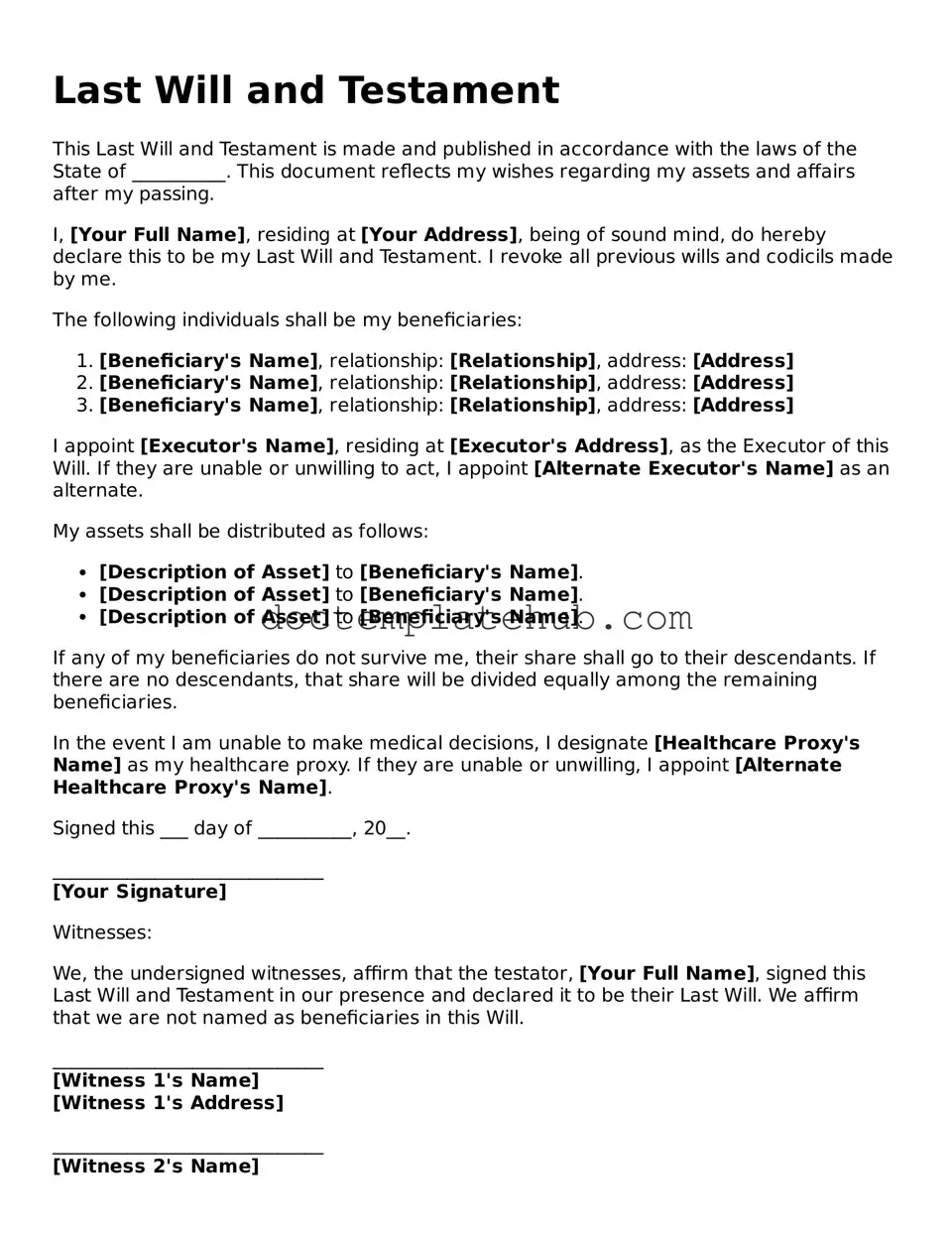What is a Last Will and Testament?
A Last Will and Testament is a legal document that outlines a person's wishes regarding the distribution of their assets after their death. It allows individuals to specify who will inherit their property, name guardians for minor children, and appoint an executor to manage the estate. This document serves as a crucial tool for ensuring that a person's desires are honored and can help prevent disputes among family members and loved ones.
Why is it important to have a Last Will and Testament?
Having a Last Will and Testament is essential for several reasons. First, it provides clarity about your wishes, reducing the likelihood of confusion or conflict among survivors. Second, it allows you to choose your beneficiaries and determine how your assets will be divided. Additionally, it enables you to appoint guardians for minor children, ensuring their care according to your preferences. Without a will, state laws will dictate how your assets are distributed, which may not align with your intentions.
Who can create a Last Will and Testament?
Generally, any adult who is of sound mind can create a Last Will and Testament. In most states, this means being at least 18 years old and able to understand the nature and consequences of making a will. It's important to note that individuals who are under duress, mentally incapacitated, or influenced by undue pressure may not be able to create a valid will.
What happens if I die without a Last Will and Testament?
If you die without a will, your assets will be distributed according to state intestacy laws. These laws vary by state but typically prioritize spouses, children, and other close relatives. This process can be lengthy and may not reflect your personal wishes, potentially leading to disputes among family members. Additionally, the court may appoint a guardian for any minor children, which may not align with your preferences.
Can I change my Last Will and Testament once it is created?
Yes, you can change your Last Will and Testament at any time, as long as you are of sound mind. This can be done by creating a new will or by drafting a codicil, which is an amendment to the existing will. It’s important to follow the legal requirements for making changes to ensure that your updated wishes are valid and enforceable.
Do I need a lawyer to create a Last Will and Testament?
While it is not strictly necessary to hire a lawyer to create a Last Will and Testament, consulting with one can be beneficial. A lawyer can help ensure that your will complies with state laws and accurately reflects your wishes. For those with complex estates or specific concerns, legal assistance is often recommended. However, many states offer simple forms that individuals can use to create a basic will without legal help.
What should I include in my Last Will and Testament?
Your Last Will and Testament should include several key components. Start by identifying yourself and stating that this document is your will. Clearly list your beneficiaries and specify what assets each will receive. If you have minor children, name guardians for their care. Additionally, appoint an executor who will be responsible for carrying out your wishes. Finally, consider including any specific instructions or wishes regarding funeral arrangements or other personal matters.
How do I ensure my Last Will and Testament is valid?
To ensure your Last Will and Testament is valid, follow your state’s legal requirements. Most states require that the will be in writing, signed by you, and witnessed by at least two individuals who are not beneficiaries. Some states also allow for holographic wills, which are handwritten and do not require witnesses. Always check local laws to confirm the specific requirements in your state, as failing to meet them can result in the will being deemed invalid.
